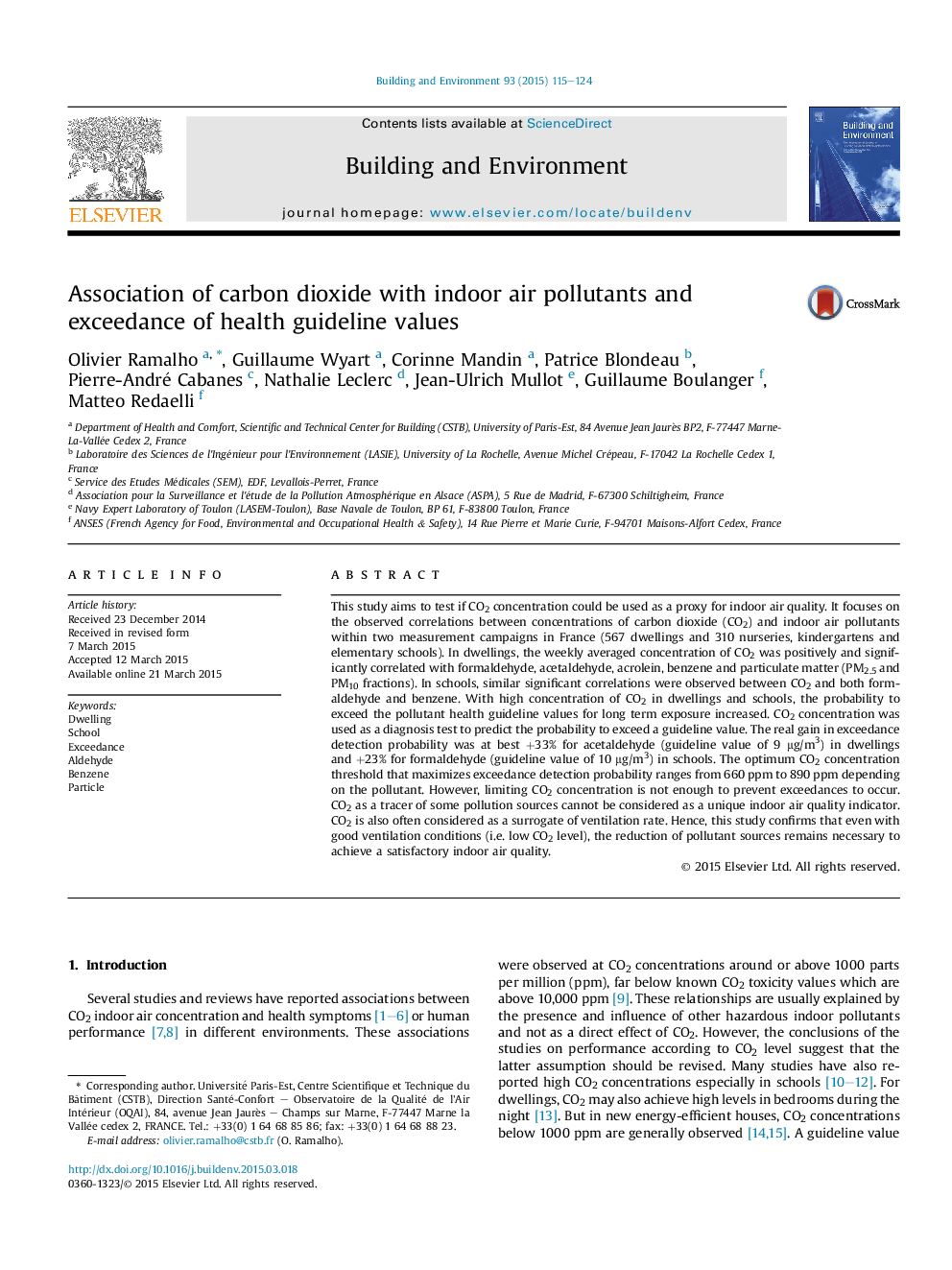| کد مقاله | کد نشریه | سال انتشار | مقاله انگلیسی | نسخه تمام متن |
|---|---|---|---|---|
| 247935 | 502534 | 2015 | 10 صفحه PDF | دانلود رایگان |
• CO2 is correlated with several indoor air pollutants in dwellings and schools.
• High CO2 level increases the risk to exceed a pollutant health guideline value.
• CO2 level is used as a diagnosis test to predict the probability of exceedance.
• The highest gain in prediction of exceedance probability was +33% for acetaldehyde.
• Limiting CO2 concentration is not enough to prevent exceedances to occur.
This study aims to test if CO2 concentration could be used as a proxy for indoor air quality. It focuses on the observed correlations between concentrations of carbon dioxide (CO2) and indoor air pollutants within two measurement campaigns in France (567 dwellings and 310 nurseries, kindergartens and elementary schools). In dwellings, the weekly averaged concentration of CO2 was positively and significantly correlated with formaldehyde, acetaldehyde, acrolein, benzene and particulate matter (PM2.5 and PM10 fractions). In schools, similar significant correlations were observed between CO2 and both formaldehyde and benzene. With high concentration of CO2 in dwellings and schools, the probability to exceed the pollutant health guideline values for long term exposure increased. CO2 concentration was used as a diagnosis test to predict the probability to exceed a guideline value. The real gain in exceedance detection probability was at best +33% for acetaldehyde (guideline value of 9 μg/m3) in dwellings and +23% for formaldehyde (guideline value of 10 μg/m3) in schools. The optimum CO2 concentration threshold that maximizes exceedance detection probability ranges from 660 ppm to 890 ppm depending on the pollutant. However, limiting CO2 concentration is not enough to prevent exceedances to occur. CO2 as a tracer of some pollution sources cannot be considered as a unique indoor air quality indicator. CO2 is also often considered as a surrogate of ventilation rate. Hence, this study confirms that even with good ventilation conditions (i.e. low CO2 level), the reduction of pollutant sources remains necessary to achieve a satisfactory indoor air quality.
Journal: Building and Environment - Volume 93, Part 1, November 2015, Pages 115–124
